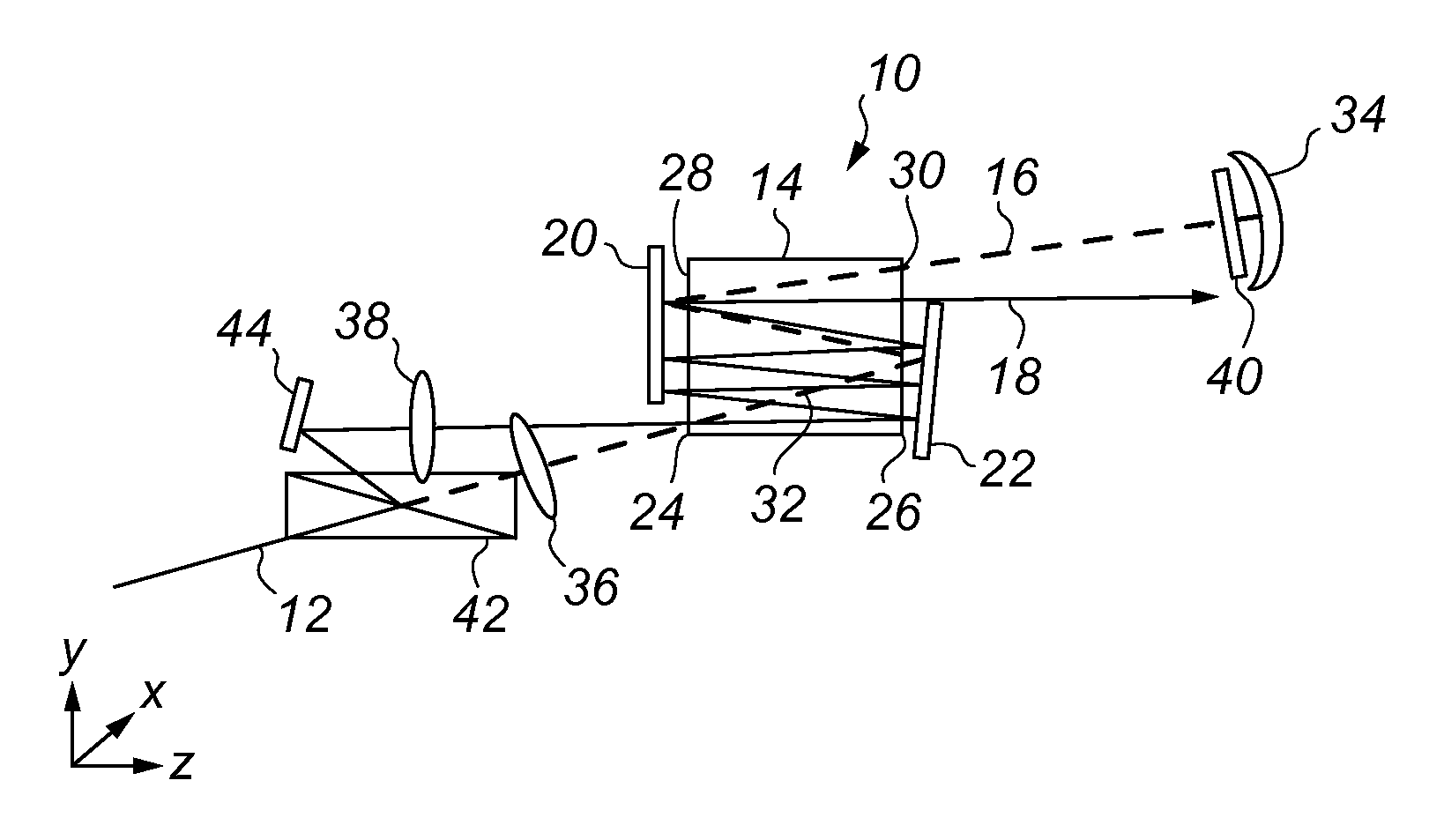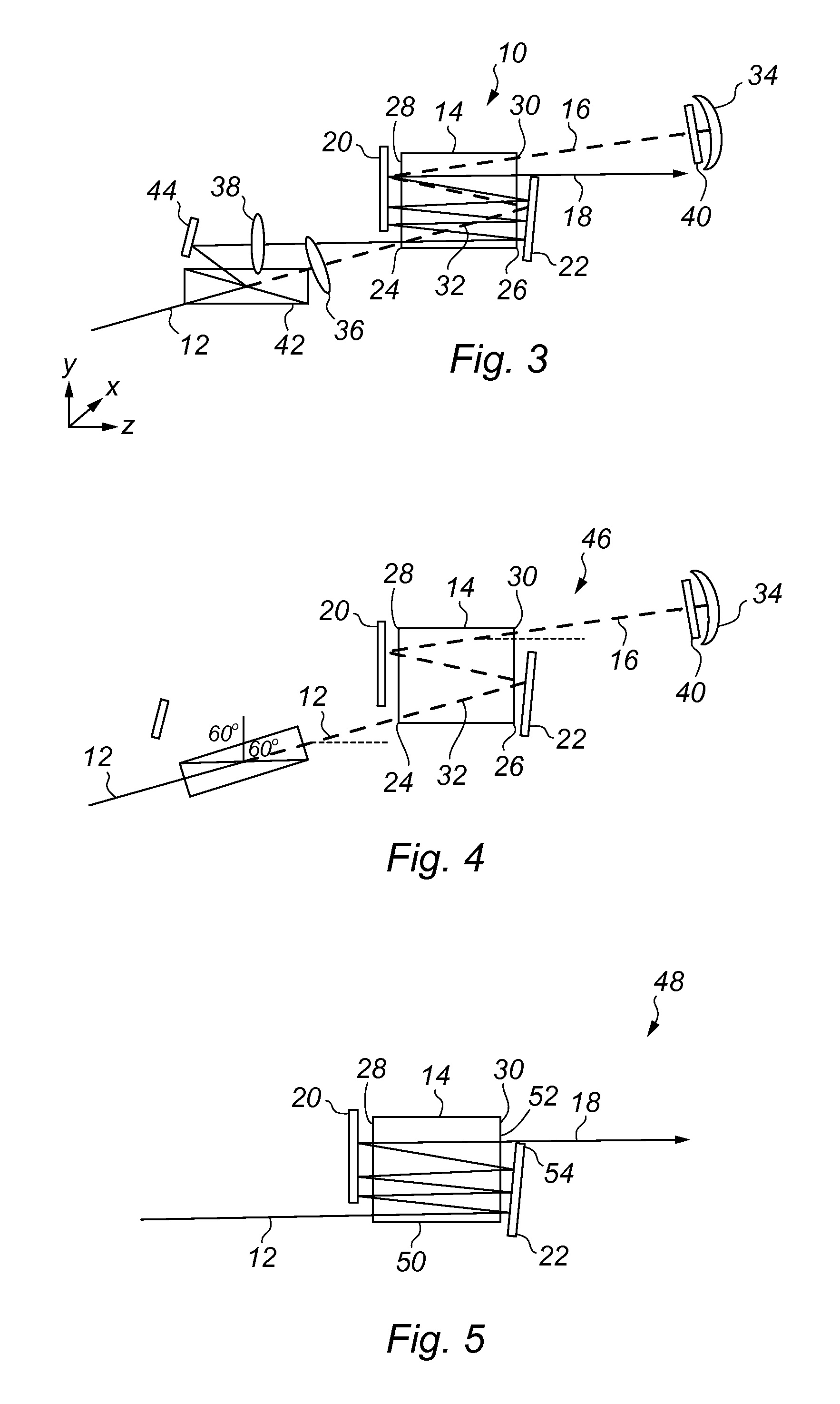Optical amplifier arrangement
a technology of optical amplifiers and arrangement, which is applied in the direction of instruments, active medium shape and construction, lasers, etc., can solve the problems of inability to achieve combination, inability to easily adjust to an optimal frequency for a specific process, and insufficient input power, etc., to achieve the effect of folding the telescope, reducing the frequency, and compact arrangemen
- Summary
- Abstract
- Description
- Claims
- Application Information
AI Technical Summary
Benefits of technology
Problems solved by technology
Method used
Image
Examples
Embodiment Construction
[0034]Reference is initially made to FIG. 3 of the drawings which illustrates an optical amplifier, generally indicated by reference numeral 10, where a beam 12, emitted from a low power, CW or pulsed, oscillator (not shown) is amplified by passing through an amplification medium 14 in a first path 16, which makes a double pass through the amplification medium 14, and a second path 18, which makes a single pass through the amplification medium 14, according to an embodiment of the present invention. On each path, the beam 12 traverses the amplification medium 14 multiple times by reflection from mirrors 20, 22 arranged on an entry side 24 and an opposing exit side 26 of the amplification medium 14, respectively.
[0035]Amplification medium 14 is a single crystalline slab being rectangular in cross-section with a short edge and a long edge. The short edge of the cross-section is along the x-axis, the long edge is along the y-axis, and the z-axis is the optical axis when the x-, y- and ...
PUM
 Login to View More
Login to View More Abstract
Description
Claims
Application Information
 Login to View More
Login to View More - R&D
- Intellectual Property
- Life Sciences
- Materials
- Tech Scout
- Unparalleled Data Quality
- Higher Quality Content
- 60% Fewer Hallucinations
Browse by: Latest US Patents, China's latest patents, Technical Efficacy Thesaurus, Application Domain, Technology Topic, Popular Technical Reports.
© 2025 PatSnap. All rights reserved.Legal|Privacy policy|Modern Slavery Act Transparency Statement|Sitemap|About US| Contact US: help@patsnap.com



